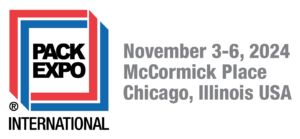-
Zara Mae Pickering
- Female
- Vista, CA
- United States
- Share on Facebook Share on Facebook MySpace Tweet
- Members Blogs
- Discussions
- Groups
RSS
A Comprehensive Guide of Liquid Mixers for Industrial Applications
Liquid mixers are critical for maintaining a product’s consistency and quality. This makes them especially essential for businesses that deal with liquid products.
Here, we’ll cover liquid mixers’ specific applications and benefits. We’ll also go over choosing the right mixer, integrating it into your processes, and the latest technological advances in the field.
The Industrial Liquid Mixer: Applications and Uses
Liquid mixers are versatile machines that blend, emulsify, or disperse liquids. They can be used for:
Food and Beverage Production
In the food industry, liquid mixers create mixtures of sauces, dressings, and beverages. For example, a liquid mixer can seamlessly blend ingredients like oil and vinegar for salad dressings, giving them a consistent taste and texture.
Pharmaceuticals
Precision is key in pharmaceutical manufacturing. Liquid mixers can create uniform suspensions and emulsions, evenly distributing active ingredients throughout the product. This consistency is vital for effective dosages.
Chemical Processing
The chemical industry relies heavily on liquid mixers for blending various components. Whether it’s creating paints, coatings, or adhesives, a reliable liquid mixer helps thoroughly mix all components to enhance product performance.
Cosmetics and Personal Care
In cosmetics, liquid mixers help create creams, lotions, and serums with the right texture and consistency. This is especially important when dealing with active ingredients that need to be uniformly distributed for the best results.
Wastewater Treatment
Liquid mixers are also employed in wastewater treatment plants. They help mix chemicals and biological agents with wastewater to boost treatment processes.
Benefits of Using a Liquid Mixer
Investing in a liquid mixer can yield significant benefits for your business, including:
Cost Savings
Liquid mixers can save you a pretty penny. If you can maintain consistent product quality with a mixer, you can reduce waste and minimize the risk of rework. In other words, you’ll achieve lower production costs and higher profitability. A win-win scenario, right?
Time Efficiency
Liquid mixers are designed to operate quickly, letting you meet production demands without compromising quality. Faster mixing times can cut down production cycles and make for quicker turnaround.
Improved Product Quality
Consistency in product formulation is essential for customer satisfaction. A liquid mixer guarantees that all components are thoroughly blended. This gives you a higher-quality final product that meets your industry’s standards.
Versatility
Modern liquid mixers can handle all kinds of liquids, including those with different viscosities. This versatility makes them suitable for multiple applications, helping your business adapt to any
…
The post appeared first on Accutek Packaging Equipment Company, Inc..
How Accutek Packaging Equipment’s Labeling Machines Empower Businesses with RFID Tag Integration
As the retail landscape evolves, giants like Walmart and Target are increasingly requiring their suppliers to include Radio Frequency Identification (or RFID) tags on their products. These labels offer benefits like easier inventory management, supply chain optimization, and product tracking, outperforming traditional barcode stickers.
But for companies to efficiently apply RFID tags, they need reliable and high-performance labeling equipment to keep pace with their production demands.
That’s where Accutek comes in.
Let’s talk about what RFID tags are, how they benefit companies, and what sets them apart from barcode labels. We’ll also go over how Accutek’s machines can streamline the RFID label application process for businesses of all sizes.
What Are RFID Tags and Labels?
RFID tags are small electronic devices that contain a microchip and an antenna. These tags communicate information wirelessly when an RFID reader scans them. This identifies products without the need for direct visual access, unlike traditional barcodes.
RFID tags are commonly used in retail, healthcare, logistics, and supply chain management because they can store large amounts of data and track items in real-time. They’re usually embedded in a product’s packaging or labeling, which helps businesses gain better control over their inventory and improve data accuracy.
RFID Tags vs. Barcode Labels: What’s the Difference?
Although both RFID tags and barcodes identify and track products, RFID technology offers significant advantages over traditional barcodes.
Barcodes can store limited information—typically just a product’s SKU or identification number. RFID tags can store detailed product data, including batch numbers, production dates, expiration information, and more.
Barcodes require a direct line of sight to be scanned, so the product must be physically visible. RFID tags can be read remotely, even if they’re hidden inside a box or behind an obstacle. This makes inventory management faster and more efficient.
RFID readers can scan hundreds of RFID tags at the same time; barcode scanners need to read each barcode individually. This makes RFID labels ideal for large-scale operations, like warehouse inventory counts or shipments in transit.
RFID tags are more durable and can withstand harsh environments, such as extreme temperatures or exposure to water and chemicals. Barcodes, which are typically printed on paper labels, can easily become damaged or faded.
Given these advantages, it’s no surprise that major retailers like Walmart and Target are pushing for adopting RFID tags. The technology offers a more comprehensive and efficient solution for tracking products, reducing shrinkage,
…
The post appeared first on Accutek Packaging Equipment Company, Inc..
Discover Accutek at PACK EXPO International 2024: Innovation in Action
We are excited to announce that Accutek will once again be showcasing at PACK EXPO International this November! Join us at Booth #S-2166 to discover our latest innovations in packaging machine systems.
Register for free using our comp code: 79N97
REGISTER NOW for PACK EXPO International 2024
Top 5 Reasons to Visit Accutek Booth at Pack Expo Trade Show
- Watch Our Machinery in Action – See our equipment performing live demonstrations.
- Uncover Cutting-Edge Technology – Explore innovative solutions you didn’t know were available.
- Solve Your Challenges – Get expert advice to address your specific project needs.
- Gain Insightful Perspectives – Learn valuable industry insights from our experts.
- Get Ready for the Future – Discover how our solutions can help you stay ahead of the curve.
Visit Us in Booth #S-2166
 …
…
The post appeared first on Accutek Packaging Equipment Company, Inc..
Exploring the Latest Trends and Technologies in Bottle Packaging
Every brand is constantly urged to discover new ways to differentiate their product on store shelves. Packaging machine, particularly bottled products, is crucial in grabbing consumer attention and influencing purchasing decisions.
Companies continuously seek new and creative methods to improve their packaging solutions, driven by changes in consumer tastes and technological improvements.
Here, you will learn about some of the latest trends & technologies shaping the future of bottle packaging and highlight the bottle labeling machine in this evolving landscape.
The Evolution of Bottle Packaging
Bottle packaging has evolved from simple glass containers to sophisticated, multi-functional packaging solutions. Historically, the primary focus was on the practicality of storage and transportation.
However, modern bottle packaging is designed to meet various needs, including environmental sustainability, cost efficiency, and aesthetic appeal.
Consumers are increasingly environmentally conscious, driving a surge in demand for sustainable packaging solutions.
Due to this change, eco-friendly bottle materials, like recycled post-consumer content (PCR) plastics and bioplastics made from plant sources, are becoming more popular. While PCR plastics have less dependency on virgin plastic production and limit landfill waste, bioplastics provide a biodegradable substitute for conventional plastics.
To encourage sustainability, brands embrace creative design solutions beyond materials. Lightweight bottles utilize less material and emit fewer pollutants during transit. Programs encouraging consumers to reuse their current bottles and reduce waste from single-use packaging are becoming increasingly popular.
Key Trends in Bottle Packaging
The key trends go beyond aesthetics, making automated labeling machines significantly optimize production efficiency and address functionality and sustainability.
Let’s dig deeper into how trends play a pivotal role in shaping the future of bottle packaging.
1. Sustainability and Eco-Friendly Packaging
Environmental issues are now a significant factor driving the packaging sector. Both regulatory agencies and consumers are pushing for more sustainable practices. A McKinsey & Company study states that 60–70% of consumers are willing to pay extra for environmentally friendly packaging.
As a result of this trend, the use of recycled plastics, biodegradable materials, and lightweight package designs has expanded. These designs preserve durability without sacrificing material utilization
2. Smart Packaging
Another fascinating innovation that is gaining attention is innovative packaging. This involves adding more functionality and improving the user experience by integrating technology into packaging.
For example, QR codes on bottle labels can be used to access product information, special discounts, or even augmented reality experiences. This trend involves customers and facilitates product tracking …
The post appeared first on Accutek Packaging Equipment Company, Inc..
Gifts Received

Zara Mae Pickering has not received any gifts yet
Zara Mae Pickering's Page
Profile Information
- Relationship Status:
- Married
- About Me:
- Accutek Packaging Equipment Company, Inc. is one of the largest packaging machinery manufacturers in the United States . It is a leading developer and manufacturer of complete turnkey packaging solutions. The Accutek Packaging Equipment Companies offer a wide variety of filling machines, capping machines, labeling machines, and complete packaging systems.
NEW MUSIC
Spotify http://spotify.redjumpsuit.com
Apple http://apple.redjumpsuit.com
Google http://google.redjumpsuit.com
Amazon http://amazon.redjumpsuit.com
FREE http://free.redjumpsuit.com
RJA CONTACTS :
PR : Mike@EarShotMedia.com
Booking : Jordan@ArteryGlobal.com
Forum
Questions....=) 116 Replies
Started by JennX in Uncategorized. Last reply by Tim Dill-Peterson Mar 25, 2019.
5 words... a Red Jumpsuit story... 253 Replies
Started by Megan (34,725 miles for RJA) in Uncategorized. Last reply by rjasnumberonefan Jul 3, 2014.
Lets play a game 418 Replies
Started by Kelly in Uncategorized. Last reply by GothicBoy☣ Jan 17, 2016.
Et tu, Brute? 8 Replies
Started by Ronnie Winter-Defoe in Sample Title. Last reply by Crystal Ascunce Dec 14, 2015.
Hello! n_n 48 Replies
Started by Gilberto The Creator in Uncategorized. Last reply by Gilberto The Creator Mar 7, 2014.
Groups
-
RJA freak forever allian…
180 members
-
"Your Guardian Angel" cl…
306 members
-
Florida Fans<3
166 members
-
The Red Jumpsuit Apparat…
154 members
© 2025 Created by RJA.
Powered by
![]()

Comment Wall
You need to be a member of The Red Jumpsuit Alliance to add comments!
Join The Red Jumpsuit Alliance